How To Clean a Fountain Pen the Right Way (Illustrated Guide)
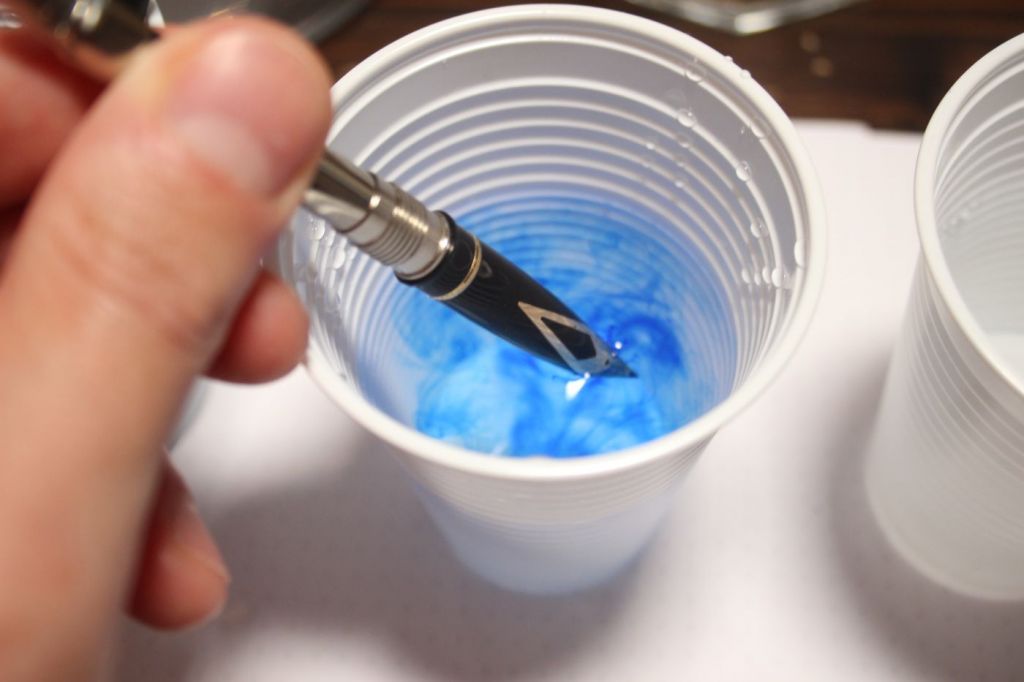
If you've never flushed a fountain pen before, it can be hard to know how to do it exactly. When I first started, I didn't realize you need to do this at first. So I wrote this guide to help you get started.
How to flush a fountain pen? Unscrew the feed from the body. Remove the ink cartridge or converter, and rinse the feed and nib with tap water. Empty the converter and reinstall it, or use a bulb syringe. Place the nib inside a cup of water and fill and empty the converter, through the feed, until you no longer flush out ink.
Some fountain pens require a bit different approach, though. Read on to learn more, and to see pictures of the entire process.
Guide: How to Flush a Fountain Pen Step-by-Step
- Unscrew the section from the body
- Remove the cartridge or converter
- Rinse the feed and nib with (distilled) water
- Empty the converter or get a clean one
- Reinstall the converter on the feed
- Get a cup and fill it with water
- Put the nib in the water and fill the converter through the feed
- Empty the converter through the feed
- Repeat until you no longer flush out old ink
- Whenever your water is saturated, replace it
- Wipe off the nib with a paper towel and check for traces of old ink
- If you keep flushing out ink, use pen flush
- Let the pen air dry and reassemble
I always wipe off my nib in between flushes. It sucks out any remaining ink, which makes it easier to see any remaining ink. In the water, it gets diluted, so it can be harder to see there.
Special filling mechanisms: piston or vacumatic
Typically, you should be able to perform all these steps without problems on nearly all fountain pens. The only pens that are a bit different to flush out are pens with a unibody, where the grip section and body are one piece. For example, piston fillers or vacumatics. With these pens, you simply use the filling mechanism instead of the converter to flush.
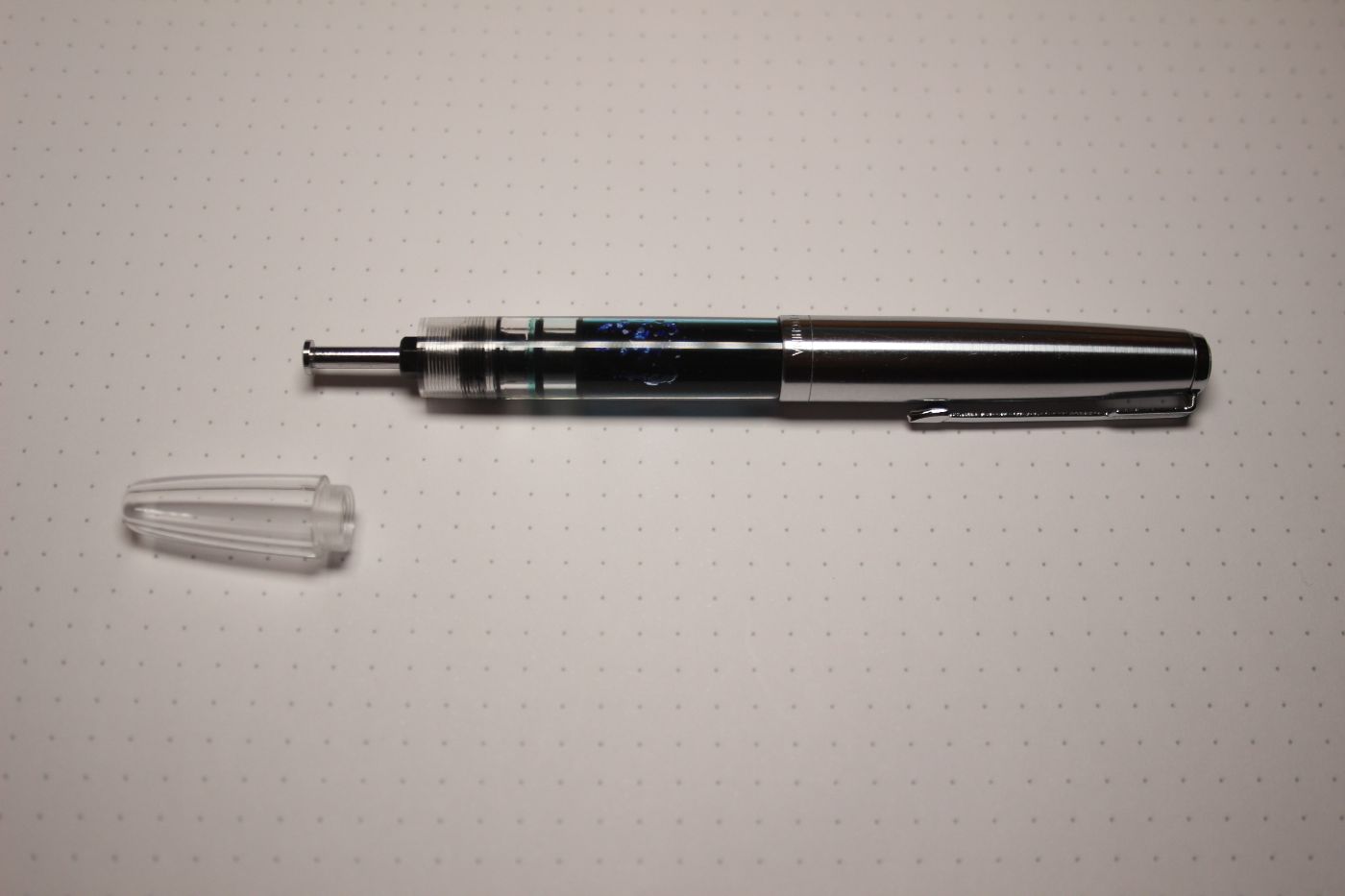
Things to avoid
There are also a couple of things you should definitely avoid.
- Don't use any special cleaning liquids
- Don't use acetone on your pens
- Use the least amount of strong cleaning products necessary
- Don't change inks without flushing; certain inks may chemically react
Tips for flushing pens
- Always start with water
- Work your way up in strength of cleaning product
- If you have multiple pens, flush them simultaneously
- Unless you have hundreds, then clean them in rounds of a dozen or so
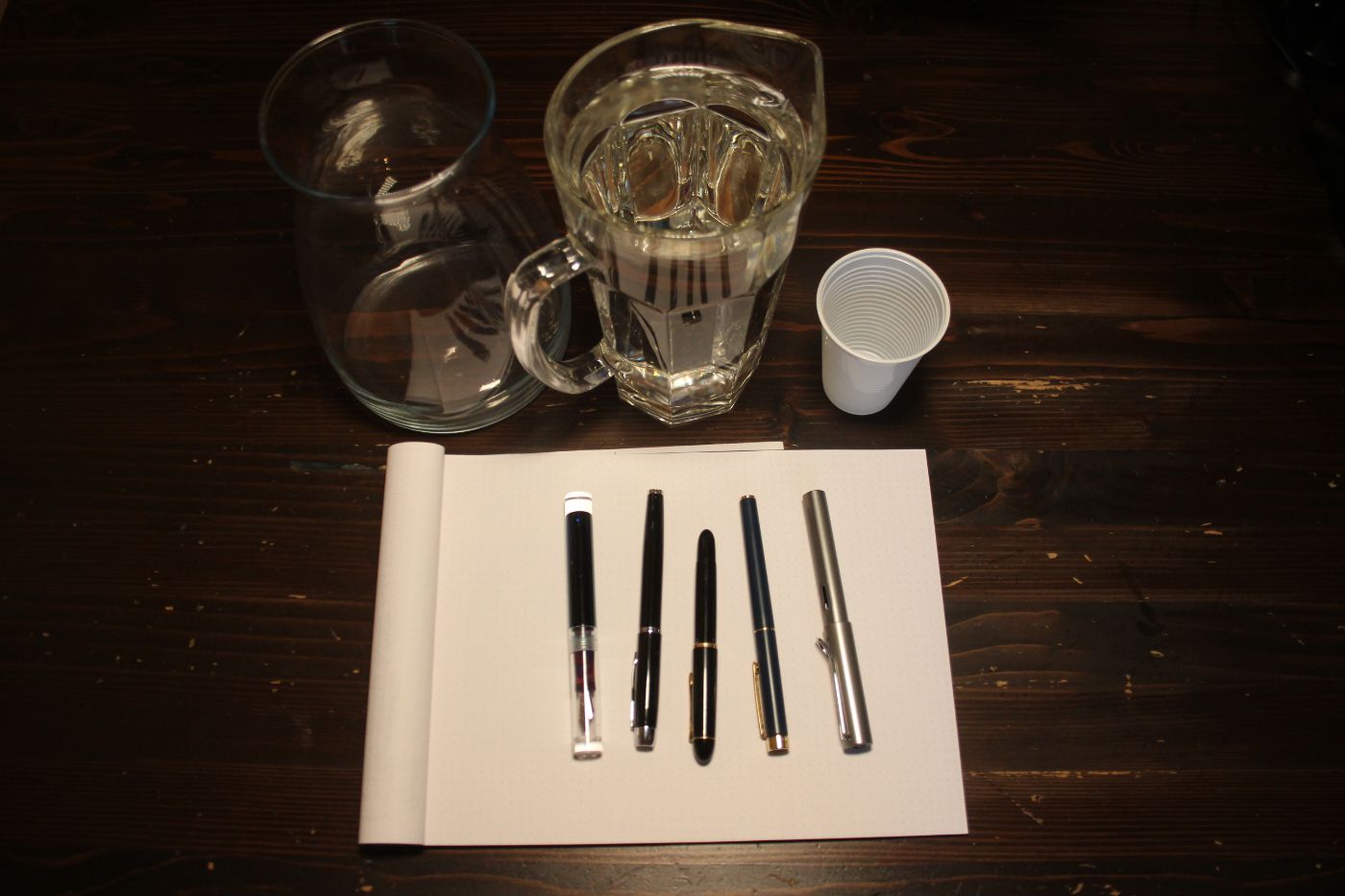
Tools you'll need
- a plastic cup
- paper towel or an old rag
- distilled water or tap water
- converter or bulb syringe
- optional: fountain pen flush
Below, I'll go over each step one by one, explaining any essential details and showing you pictures of the process along the way. Some steps might be a bit overexplained, but I don't want to make any assumptions and want to make sure you understand every step completely.
Get set up
Before I do anything else, I collect my tools, get my water, and get set up. This sounds like I'm overdoing it with the steps, but working methodically really reduces the cleaning time involved.
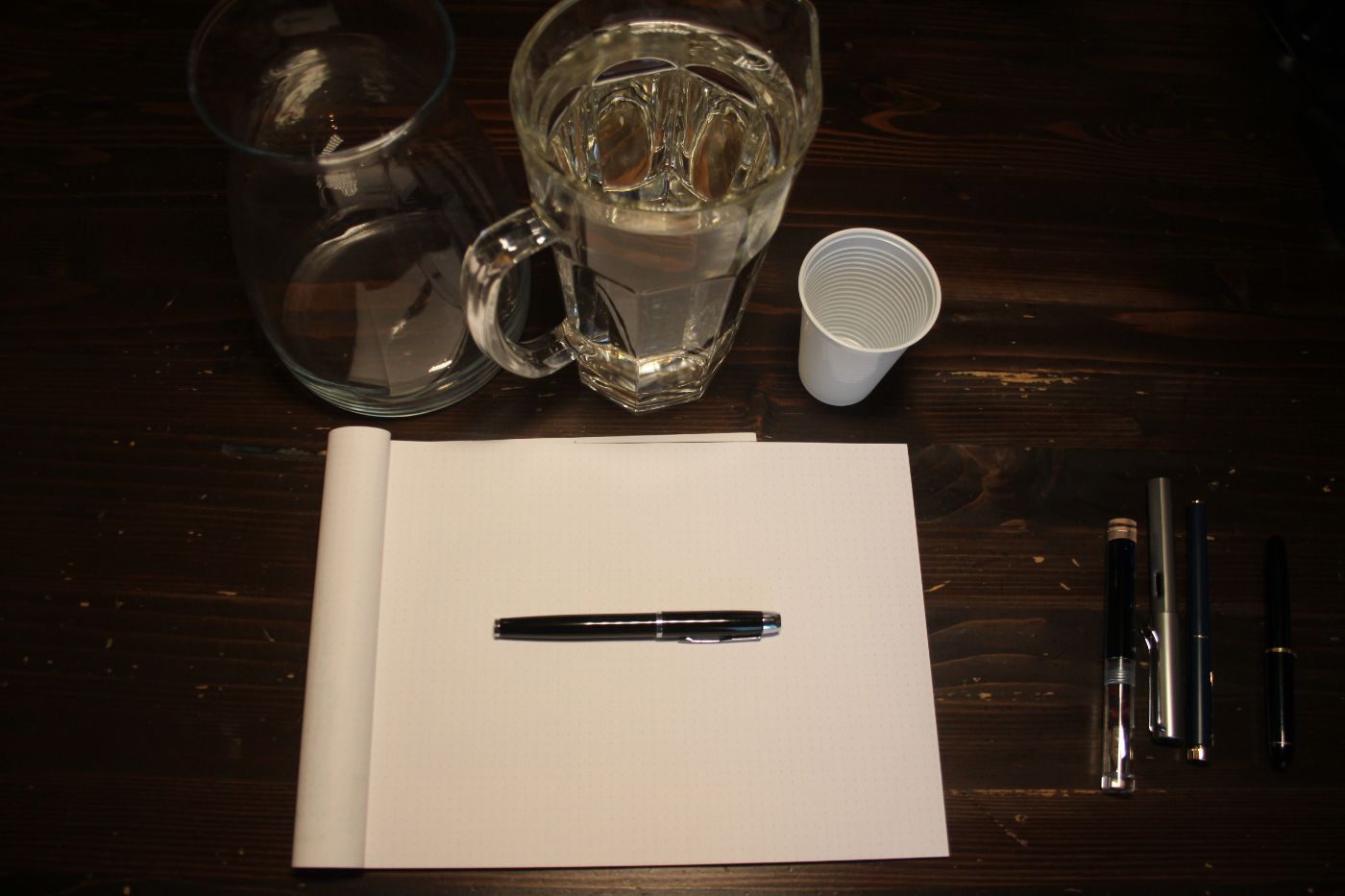
I try to clean a couple of times at the same time. More than eight pens becomes a lot of work quickly (over half an hour) so I generally clean 3-6 pens at a time.
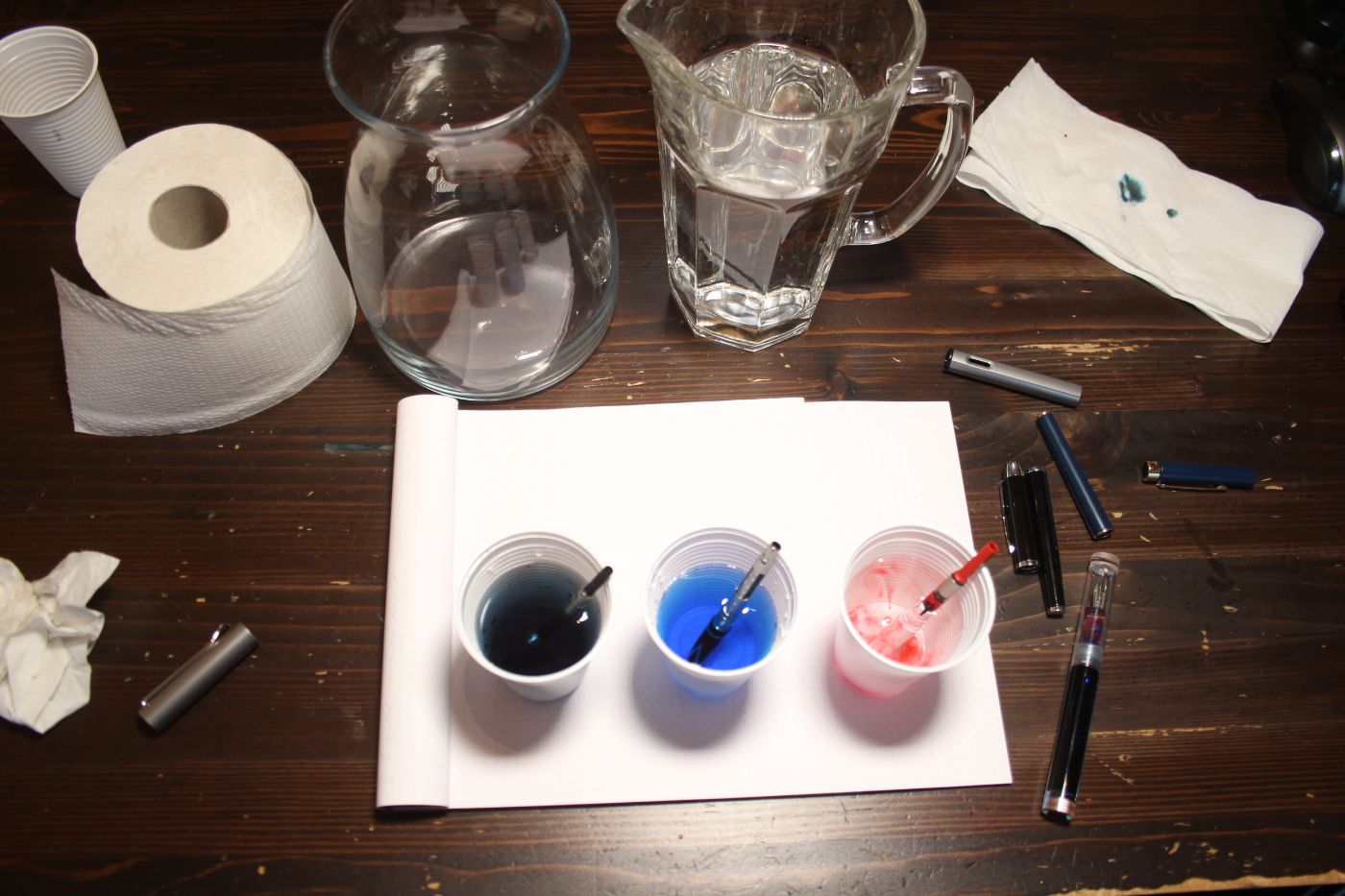
Unscrew the section from the body
With most pens, this is easy as pie. The section is the piece you grip when writing, that has the nib and the feed in it. Uncap the pen. Take the section and turn it counter-clockwise to unscrew it from the body. You should end up with a pen in two pieces.
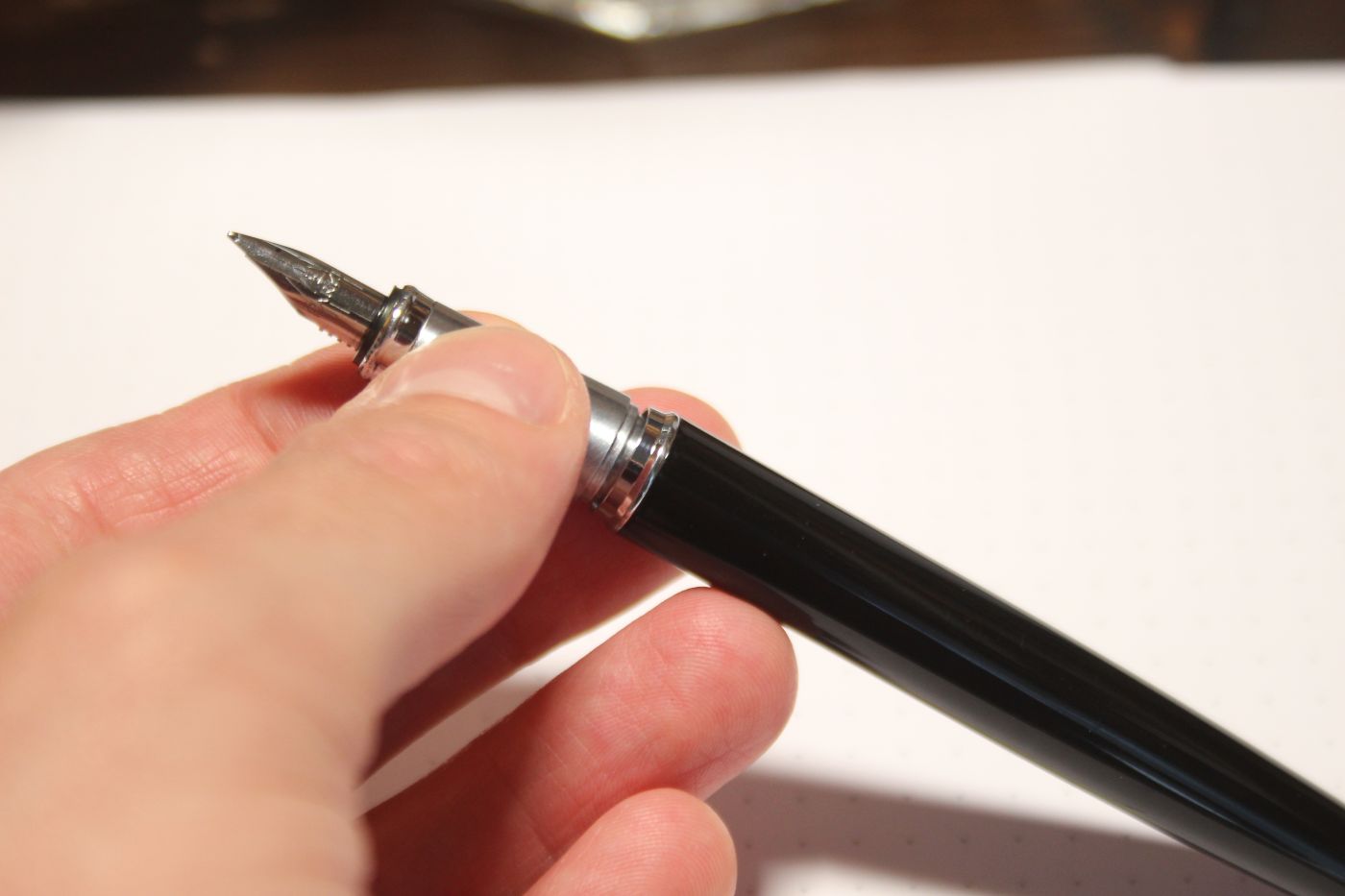
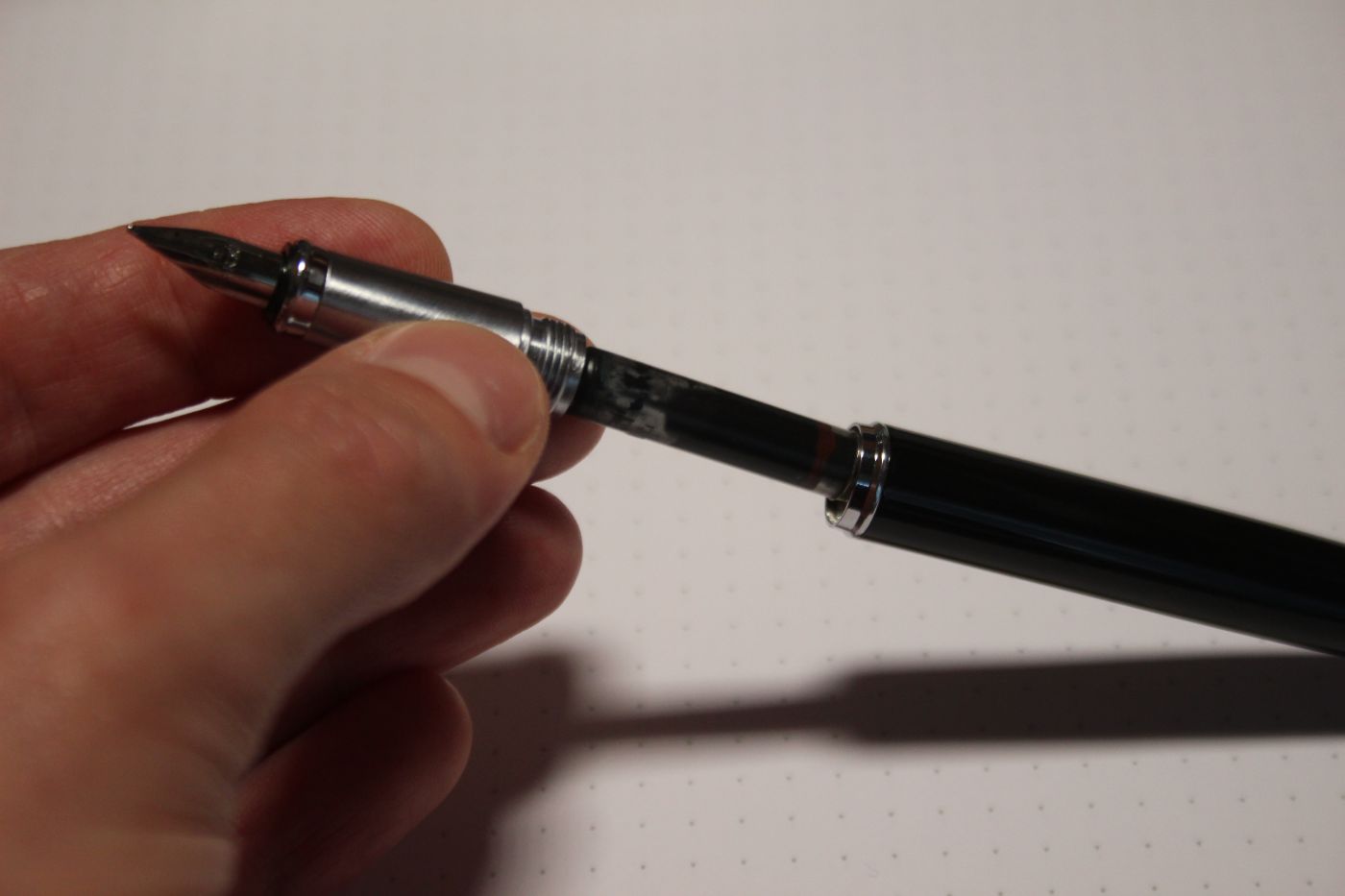
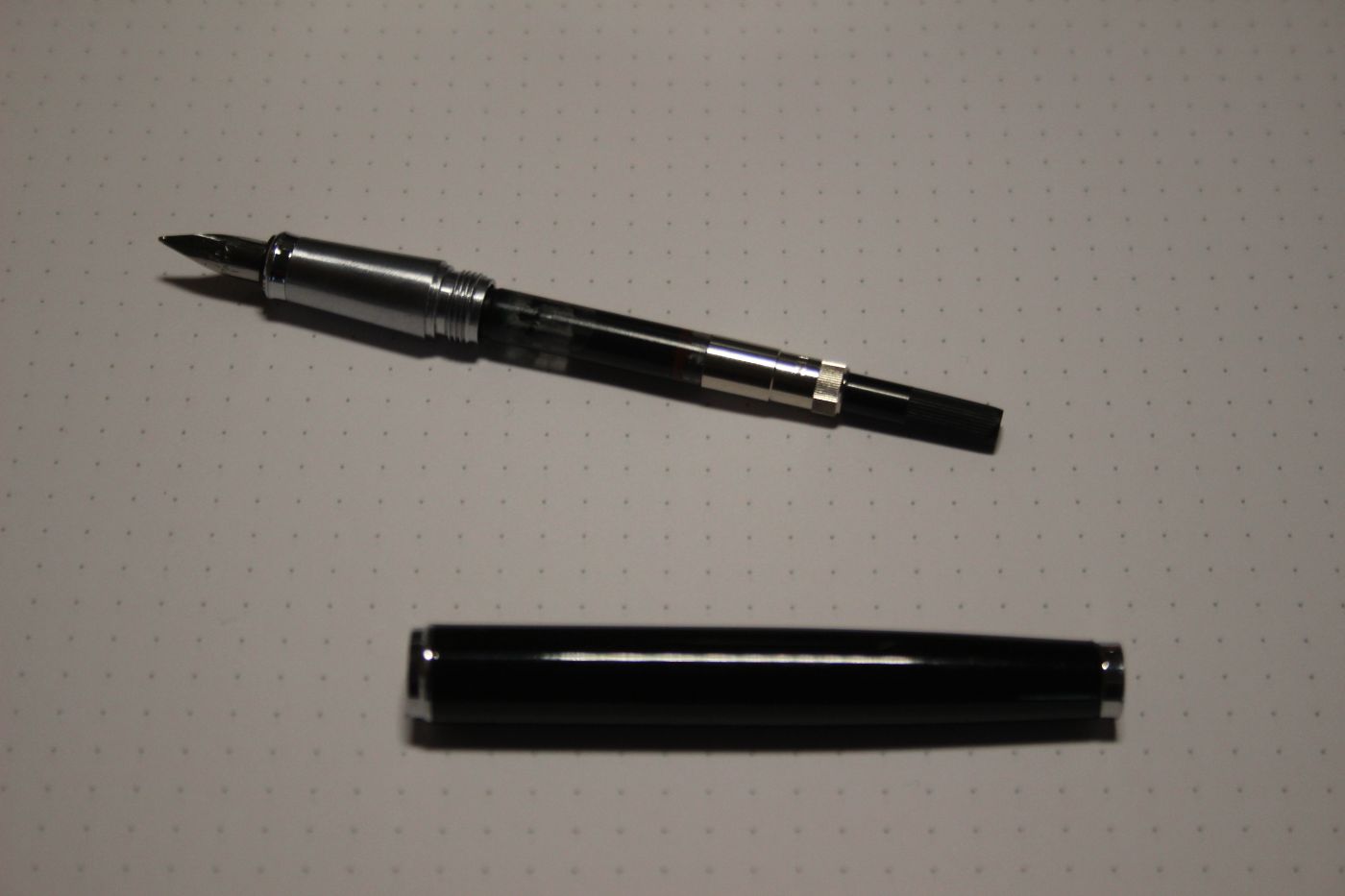
Remove the cartridge or converter
The section has a converter or cartridge attached to it. We want to take that out and put it aside for now. You can simply pull the cartridge or converter. It might be a tight fit, but it will pop out.

Rinse the feed and nib with (distilled) water
Now take the section you have unscrewed and rinse it with water. I always rinse my section under the tap. Purists will say you should distilled water. Tap water contains limescale, which will build up in your pens over time. That may very well be true. I use tap water nonetheless. I think it's normal use, and the pen will be able to deal with it.
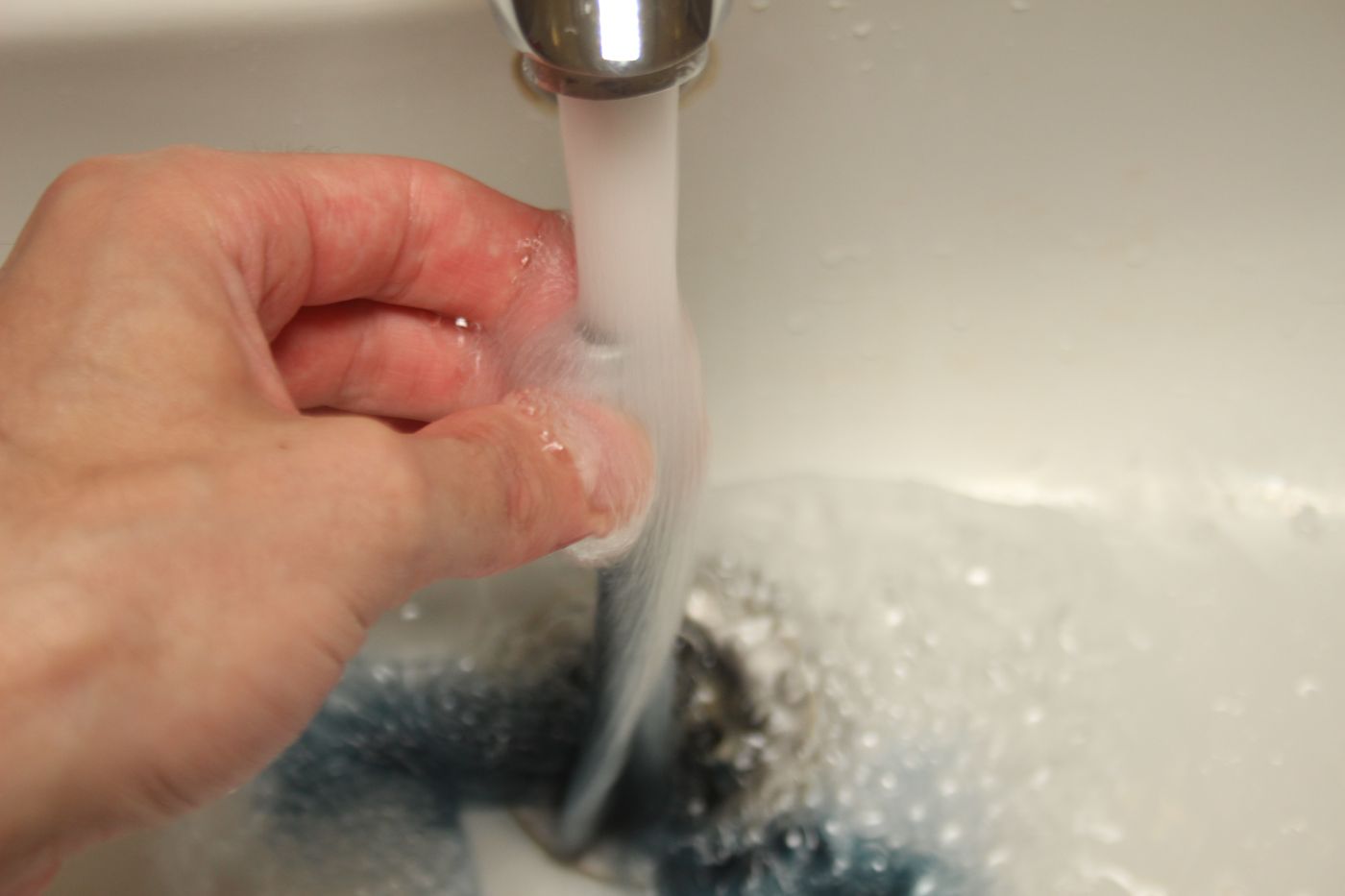
Rinsing under the tap has an advantage (apart from being cheap): you get a nice, powerful stream that will flush really clean out the feed mouth and the exposed part of the feed under the nib. That's probably where you'll find the most buildup anyway.
You'll see the water knocking out your ink, which gives a nice effect in your sink.
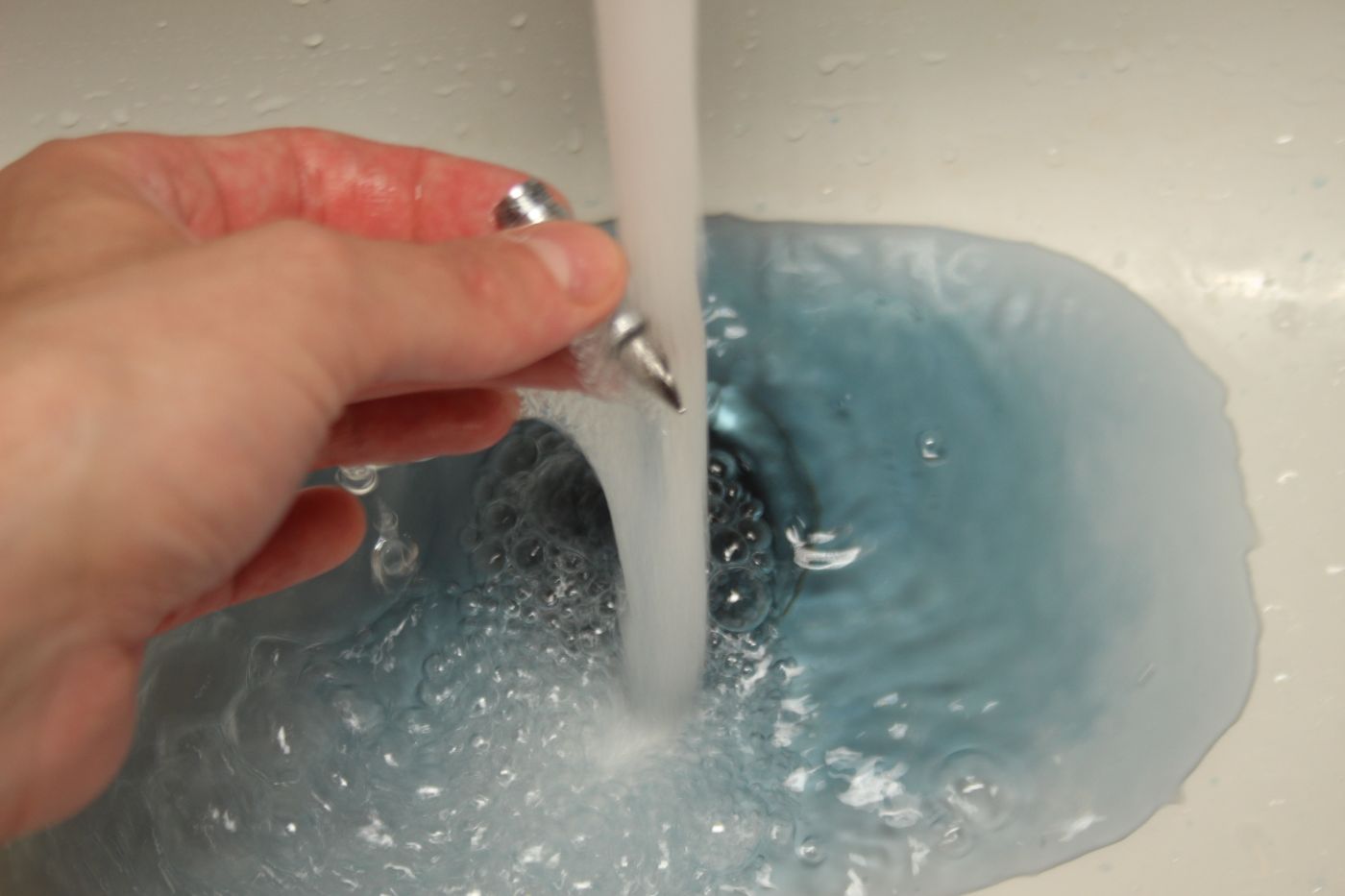
Empty the converter or get a clean one
For our actual flushing, we will need our converter, so I now empty the converter. You could also use a bulb syringe. I don't have one at the moment, but I will probably get one. I've heard a lot of pen enthusiasts claiming it to make cleaning your pens so much easier.
Update: I've got one and I can recommend getting one as soon as possible. They're affordable and really speed up a somewhat painstaking process. You can find universal bulb syringes on Amazon.
If you only use cartridges, you will need a bulb syringe anyway. What if you use cartridges but don't have a bulb syringe? I recommend flushing out the feed under the tap, and wiping it with a paper towel. Repeat this process until your towel stays almost entirely clean. Now soak the section in a cup of water overnight and wipe with a paper towel again. I do recommend getting a bulb syringe, or a converter, which is cheaper in the long run anyway.
In my case, I use converters, and I simply use the regular converter I already have for flushing my feed. Don't put your old ink back in your ink bottles. There is a chance you will contaminate your ink bottles if you do. (I do put the ink back sometimes, but it is at your own risk).
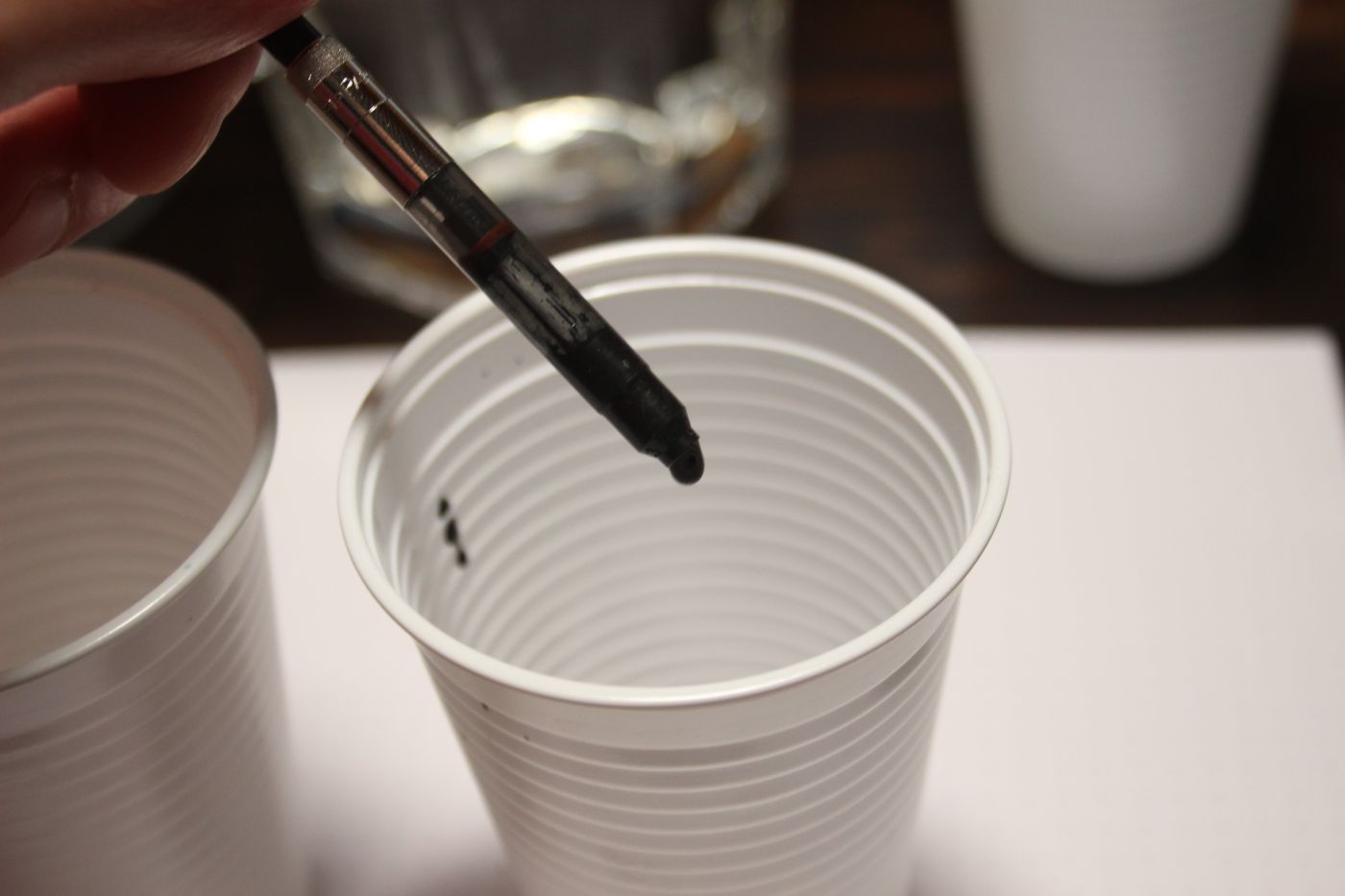

Reinstall the converter on the feed
Pop the converter back in, or place a bulb syringe over the feed.
Get a cup and fill it with water
I have these white plastic cups in my office. I use them over and over again. They're very thin and cheap, but they are super handy when you're cleaning out pens (especially when you're cleaning a dozen at a time).
Fill it up with (distilled) water. Again, I use regular tap water here.
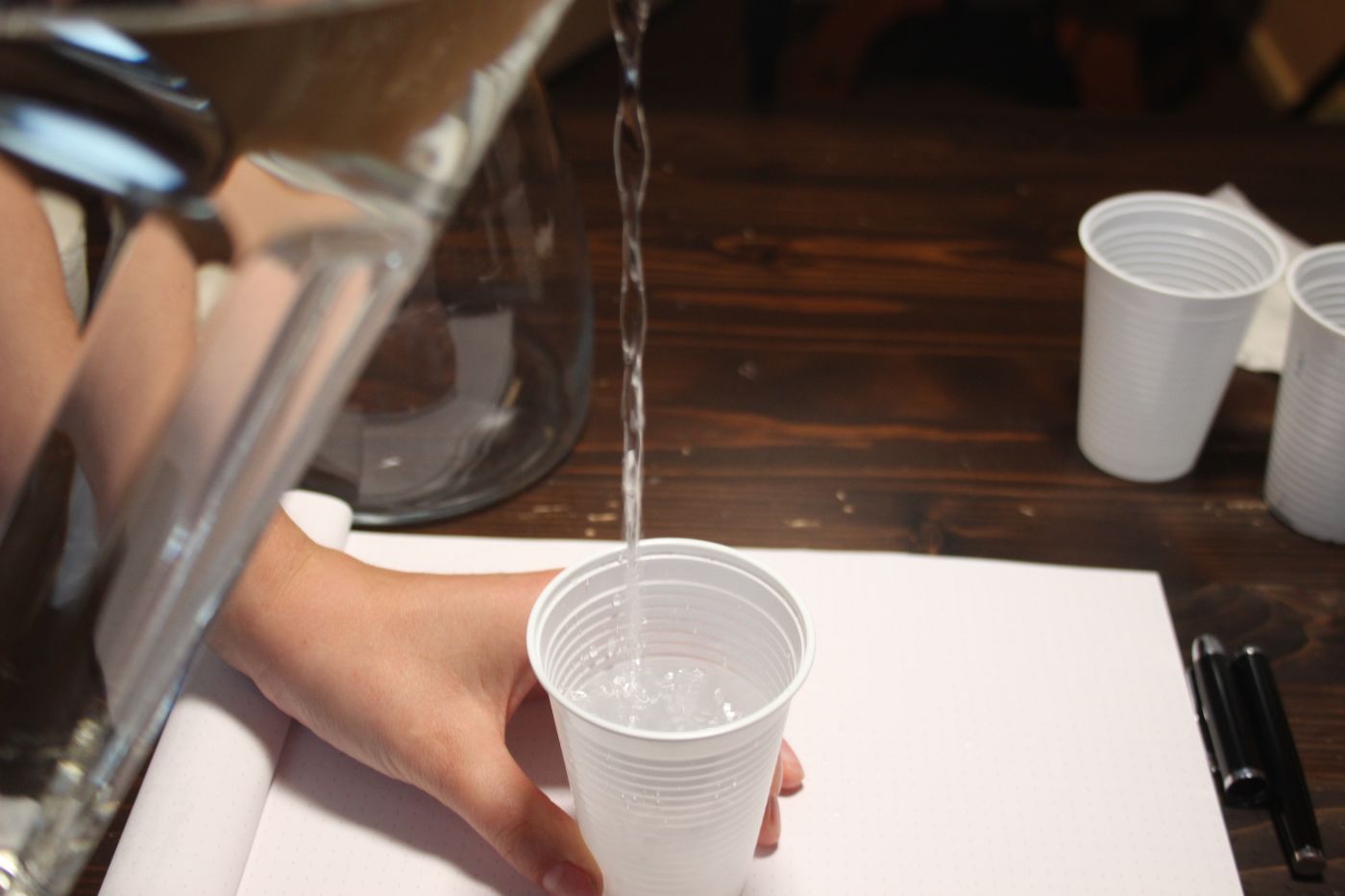
If you simply rinse the cups after use, you can reuse them very often before they go bad. I've used the same set of cups for more than six months now.
Put the nib in the water and fill the converter through the feed
Now place your nib and feed underwater and turn the converter knob until it's filled up. The water will look saturated with ink. The reason we fill it through the feed is to flush out any ink buildup in the feed. You will be surprised how much ink remains in the feed.
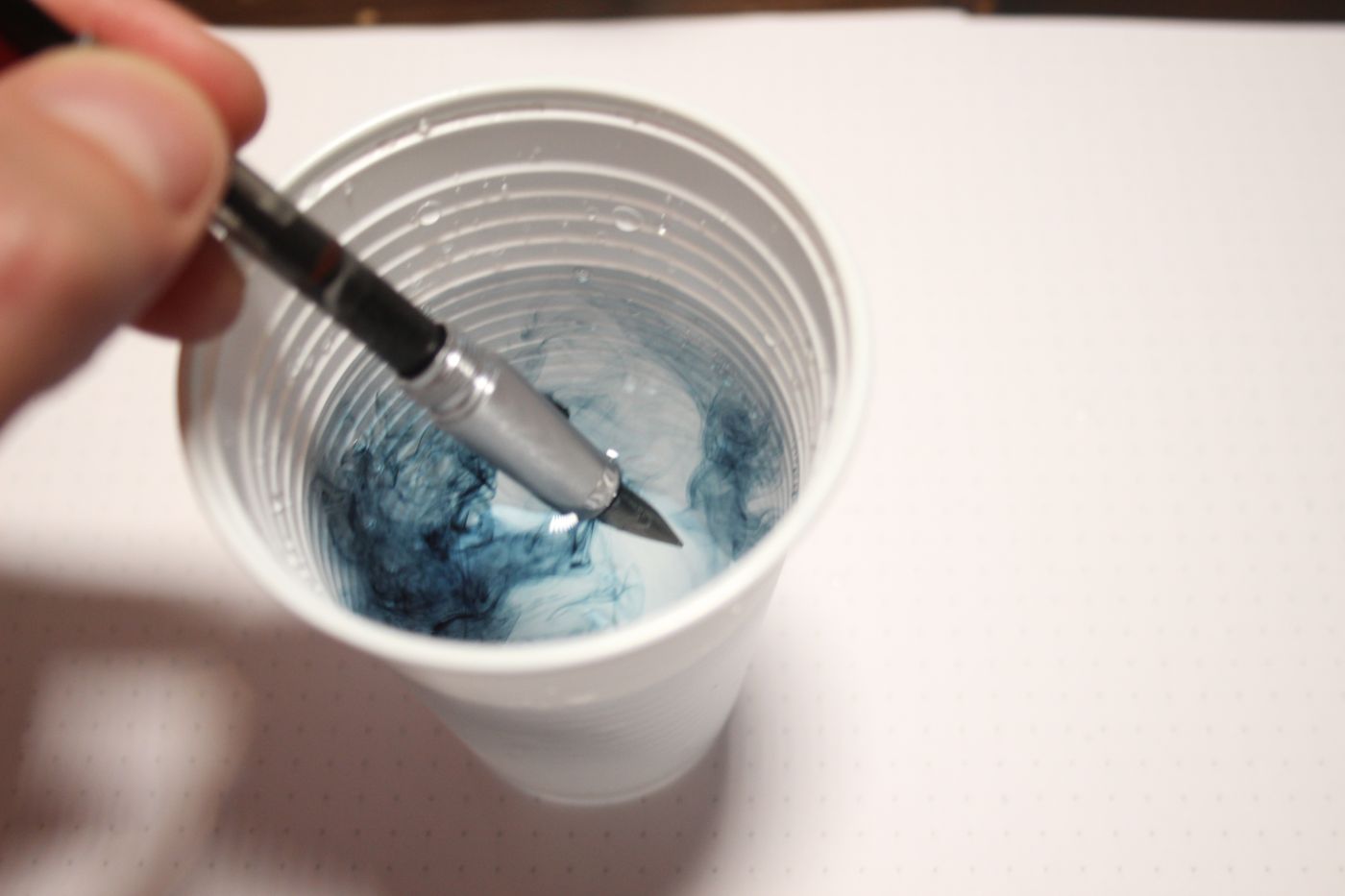
Empty the converter through the feed
Turn the converter knob the other way to empty the converter through the feed. Within the first few rounds, the water in your cup will become saturated.

Whenever your water is saturated, replace it
Once the water is saturated, flush it and replace it with fresh water. When I clean out my pens, I take a dozen plastic cups, a gallon of fresh water, and an old vase to dump my saturated water in. This makes the cleaning process a lot quicker if you're doing large quantities.
Whenever pouring your water out of the cup (into the sink, or into your vase), make sure you keep your nib and section safe if it's in there.
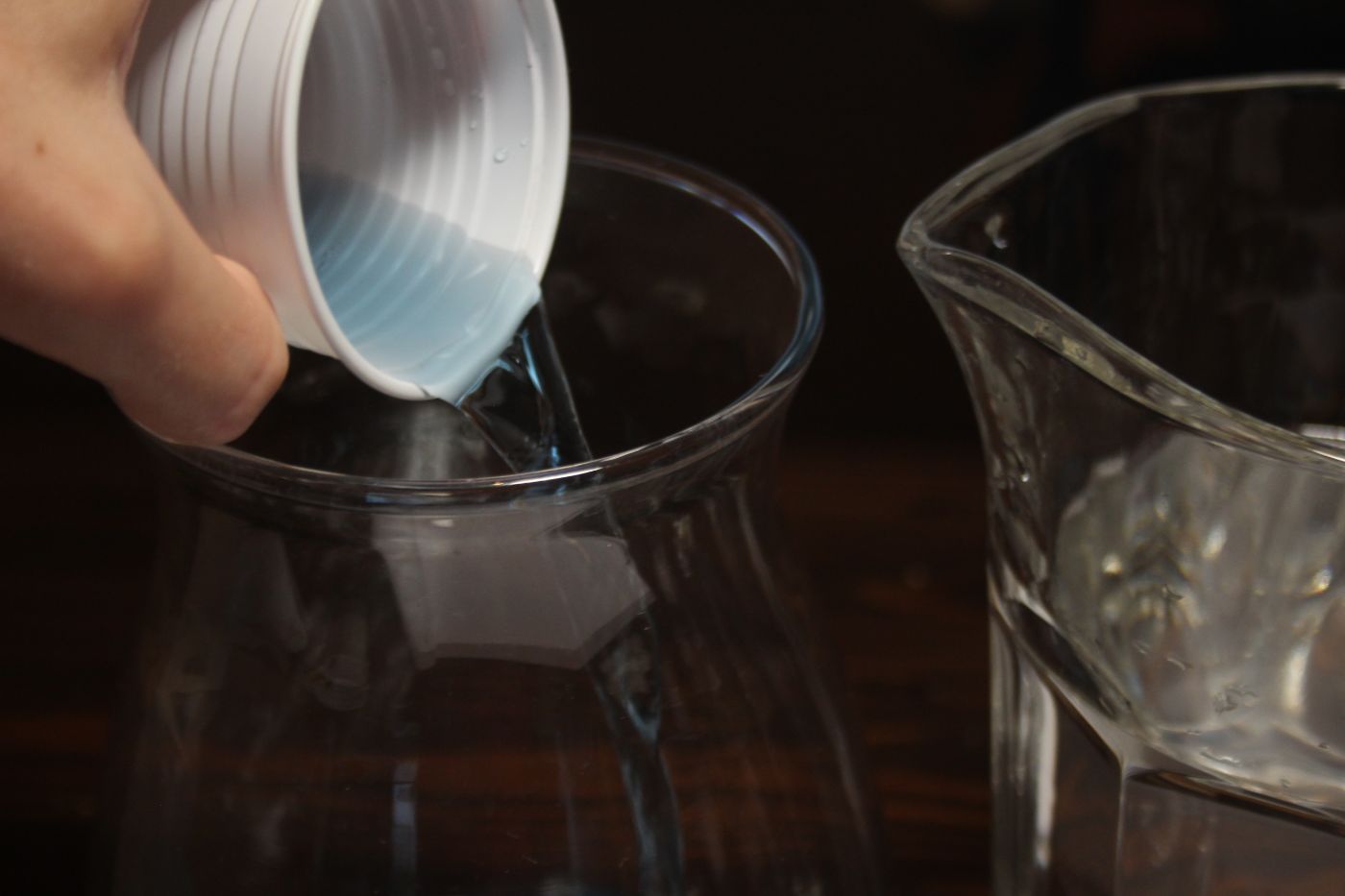
Repeat until you no longer flush out old ink
Repeat this process until you no longer flush out old ink. If you are going to fill it up with the same ink as before, you can probably get away with a quick flush. However, whenever I'm changing inks, I make sure I get perfectly clean water. Certain inks may chemically react with each other, and you don't want that to happen inside your feed. It might ruin your pen.
After a couple of rounds, I remove the converter from the section and drop the section into the water. Make sure you don't drop the section on the nib, especially with heavier sections (like steel): it may damage the nib. I then flush the converter one or two times separately.

As you will see, there will come a lot of ink from the back of the section. This is ink that was stuck between the feed and the converter.
It generally takes me three to four fresh cups of water until the pen is pretty clean.
Once I think it is clean, I generally let it sit for a minute with water in the feed. This will soak off any buildup.
Wipe off the nib with a paper towel and check for traces of old ink
Whenever you no longer see old ink coming out, wipe off your nib with a paper towel. Check the paper towel for traces of old ink. The paper will suck out any water and ink that remains inside the feed. Its a lot easier to check for traces than your plastic cup.

Let's flush again.
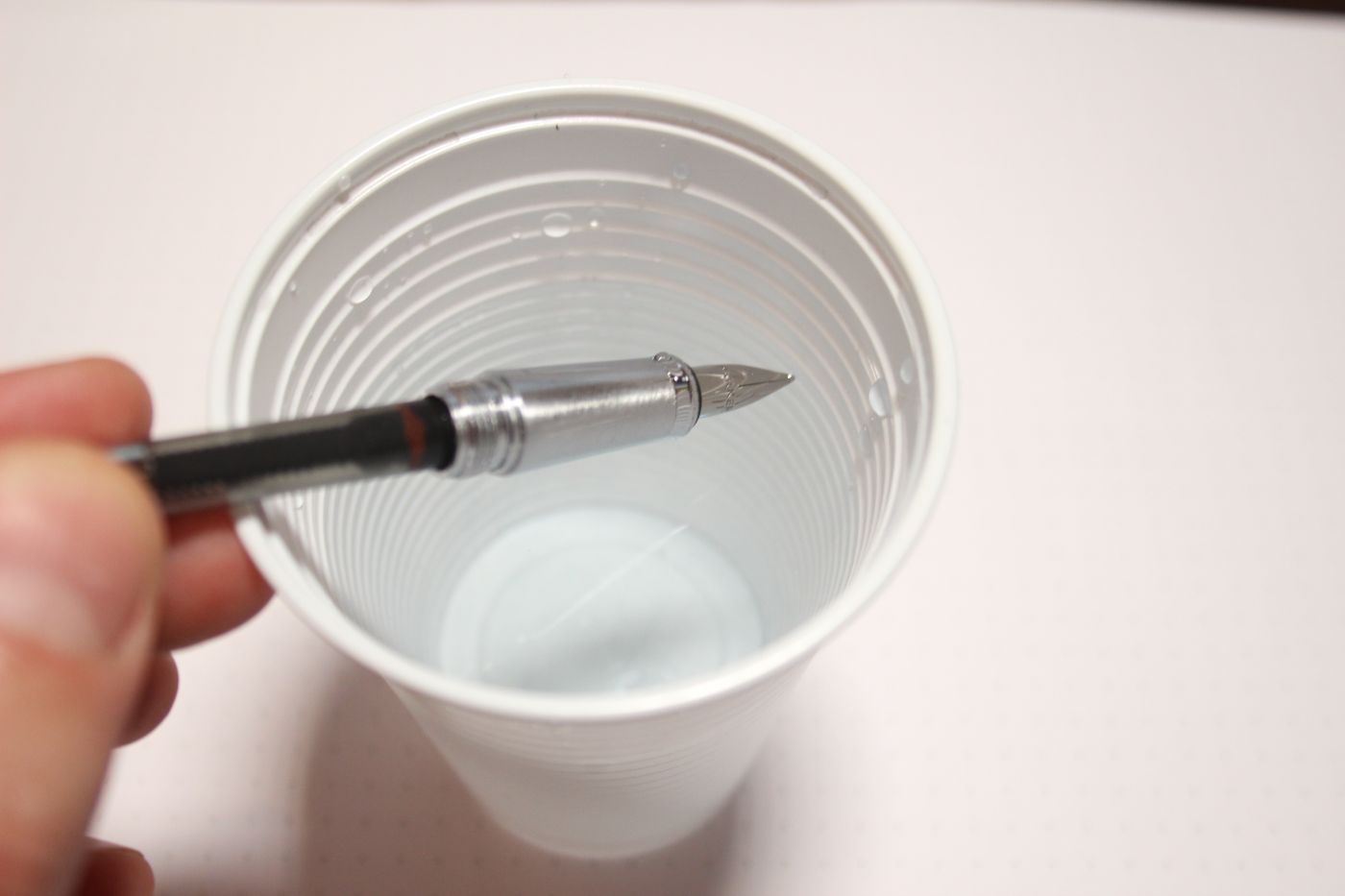
Once it looks like this, I'm satisfied:
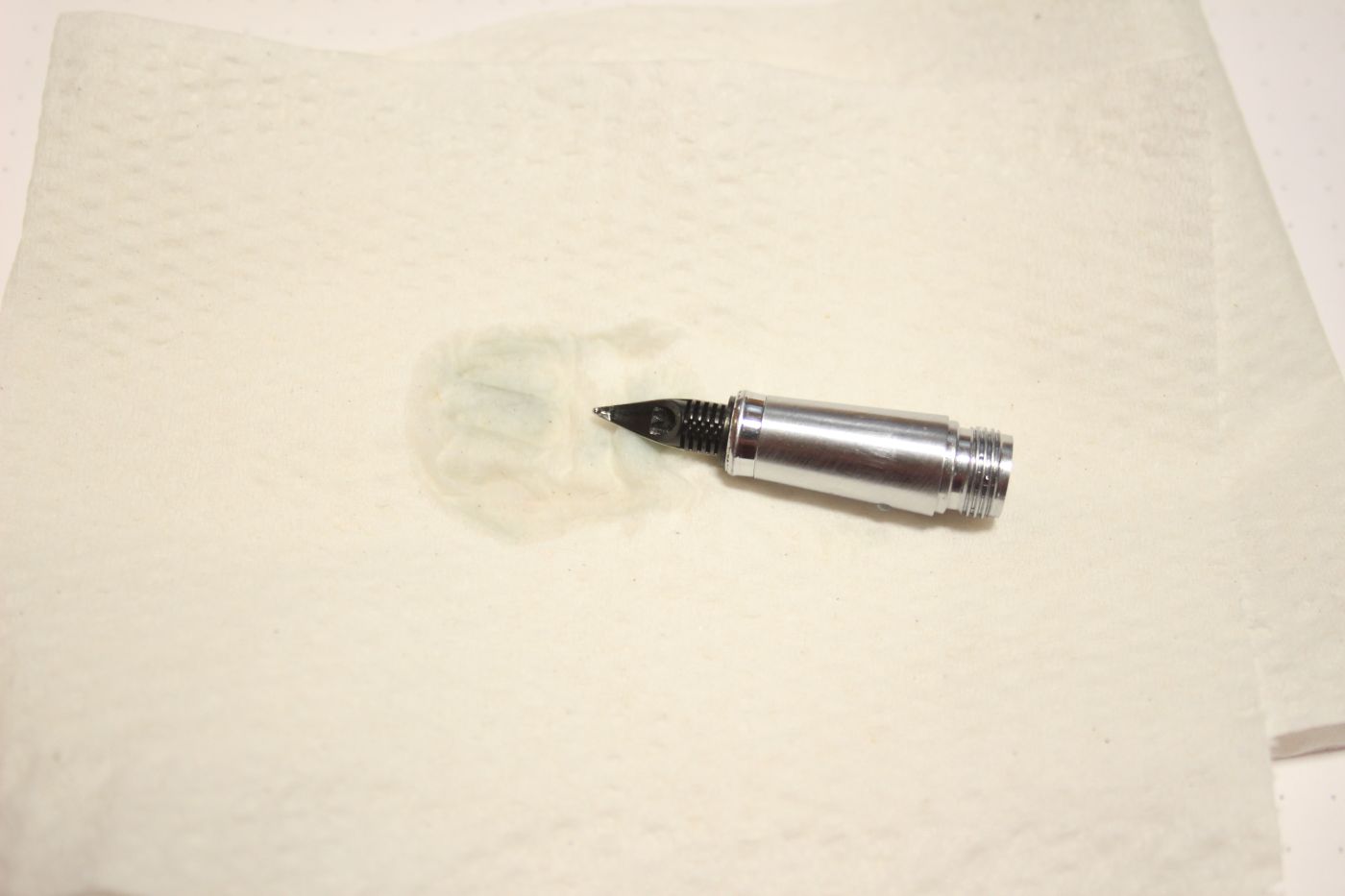
Let the pen air dry and reassemble
Let the pen air dry for a couple of hours, or preferably overnight.
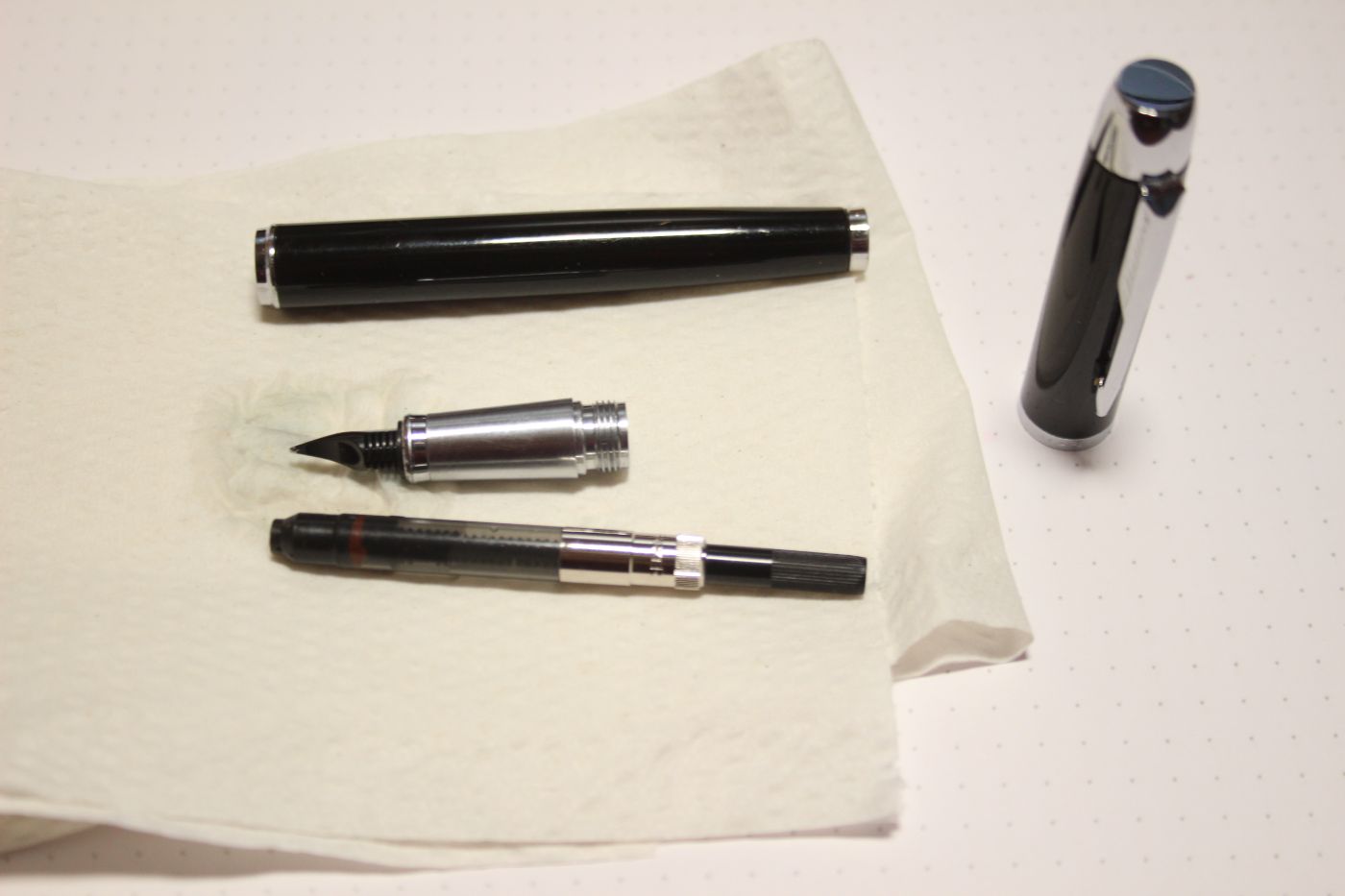
Soak overnight if you keep flushing out ink
If you keep flushing out ink, I recommend soaking the pen in water overnight. Make sure to flush it properly before soaking, and fill the feed with water — otherwise it won't really soak at all. Let it sit overnight and repeat the flush. You'll see that a lot of additional ink comes out.
If you keep flushing out ink, use pen flush
If you keep getting ink after an overnight soak, it's time to step up the effort. I flush the pen in the exact same way as above, but I use pen flush instead. You can get pen flush from a fountain pen store, but I've written an article on how you can just as easily make your own for about $2. Take a look and try it out. This fountain pen flush should work on most pens, without damaging any parts.
Some people recommend using a little dishwashing soap in their water when they flush. However, I have read that this leave residue inside your feed that is more problematic than a bit of old ink, so please be advised.
Please note: you always want to go easy on pen flush or other cleaning liquids. That's why I really try my best to clean out the pen with regular water before using something stronger.
In Conclusion
If you flush out your pens every month or so as we did today, your pens will keep writing very well. You will get the maximum out of your fountain pens, which is why we have them in the first place (or at least I do). It's not a lot of work once you get handy at it. You can clean a pen in a couple of minutes.
I've found that I tend to take my time, just because I enjoy cleaning them. It has become somewhat of a meditative exercise for me. As we've seen, it is easy as pie, and your pens will write smoothly for a long time.
If you want more tips on how to keep your pens writing smoothly, be sure to read my guide on how to make any fountain pen write smoothly.
My recommended cleaning products for fountain pen
- Complete pen cleaning kit by Koh-I-Noor (check price on Amazon). It comes with their famous pen flush and a good bulb syringe.
- On a budget, I recommend universal bulb syringes (check price on Amazon) - for flushing out pens quickly. Simply cut off the nozzle to fit your pen sections.
- Koh-I-Noor Rapido Eze Pen Cleaner (check on Amazon) - the most well-known pen cleaner for hard-to-clean ink stains.
If you appreciate good tools and supplies, you can check out my other pen maintenance product recommendations here.
Did you find the answer to your specific question?
👍 10 👎 1
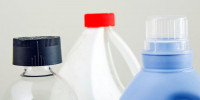
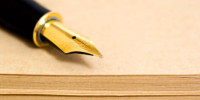
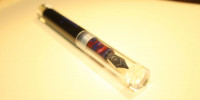
Comments
Marcus Gunaratnam
Hi,
I am trying to unclog a Trident sailor pen and my method usually works not this time and it involves about a metre length of plastic tubing (clear) from the hardware store the diameter just fits the nib section either inside or out side after soaking in hot water or not, then overnight let the dishwashing detergent solution @ 1teaspoon to 1 litre drip thru’ it and usually it is fully cleaned,but the Trident sailor nib has been stubborn even with the ultrasonic cleaner with weak sodibicarbonate(alkaline solution)
Any suggestion?
Leave a comment